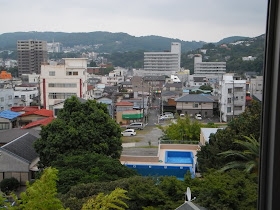I've been throwing out quite a few of the 78s this week. Nope, not referring to the really old records but the fact that I've been writing about songs that came out in 1978. I think this might be the third in as many days. Well, perhaps it's a vintage year.
(karaoke version)
Around 18 months ago, I wrote an article on one of her tracks from her 5th original album "Benisuzume"(紅雀)from March 1978 which was also her first album after officially changing her name from Arai to Matsutoya (marriage can do that to you in Japan). I had said that the album didn't exactly light any fires under me on first listening which was quite surprising but I also allowed for the fact that it would most likely grow on me over time.
Well, perhaps it's a matter of listening to each track separately. This song "Dasanai Tegami" (A Letter I Won't Send) is from Side B of the original LP, and listening to it away from any of the other tracks, I have found it to be another lovely Yuming(ユーミン)ballad. I love the lush piano (I'm assuming that it is the singer herself on the keys) and the harmonies created by her and the backup chorus. Plus, back then, her voice wasn't quite as sharply nasal so there was that wonderfully mellow delivery.
There's even a bit of Bacharach in the arrangement as Yuming sings about getting on in life after a romantic breakup. The lady in question was feeling stifled in the relationship so she felt it was time to move on in separate directions. The letter in question was perhaps an emotional request for help to her old flame to be sent out at a point of weakness but as long as she's getting back on her feet again, it will probably stay firmly gathering dust in her drawer.
Yes, perhaps it's time to give "Benisuzume" another listen.
























